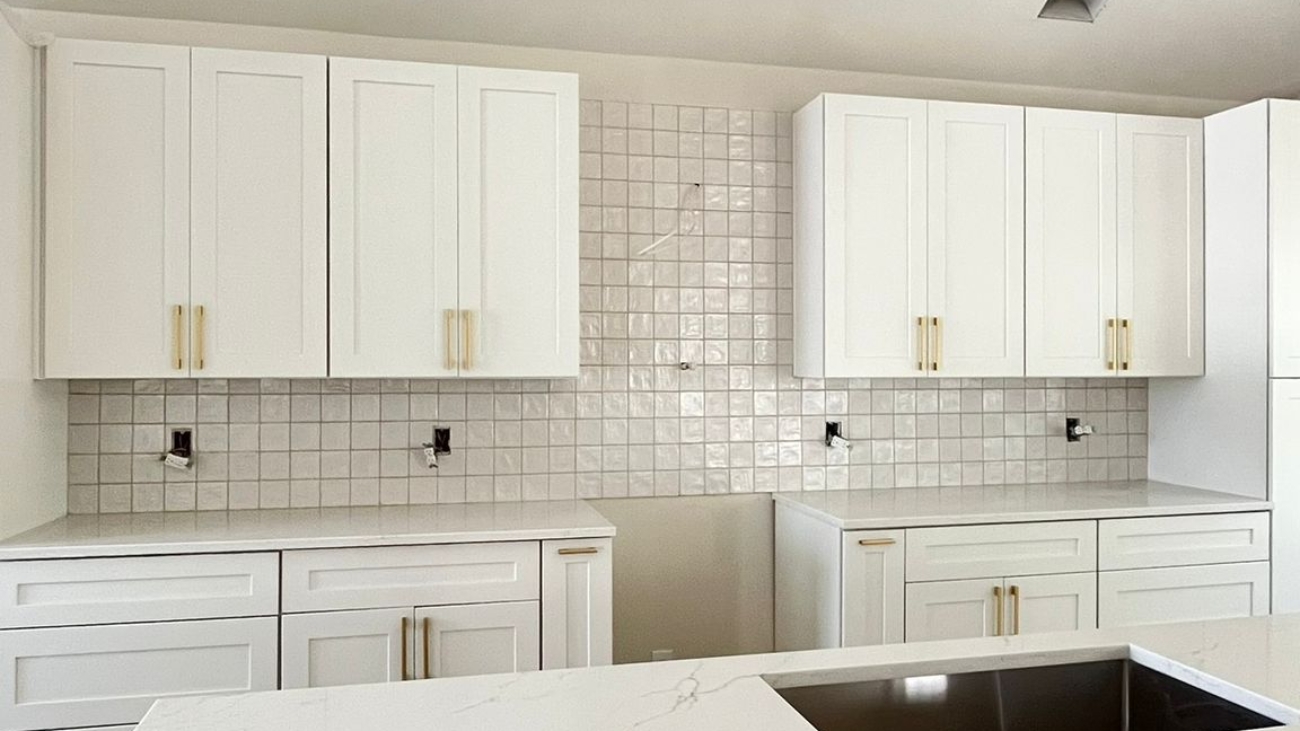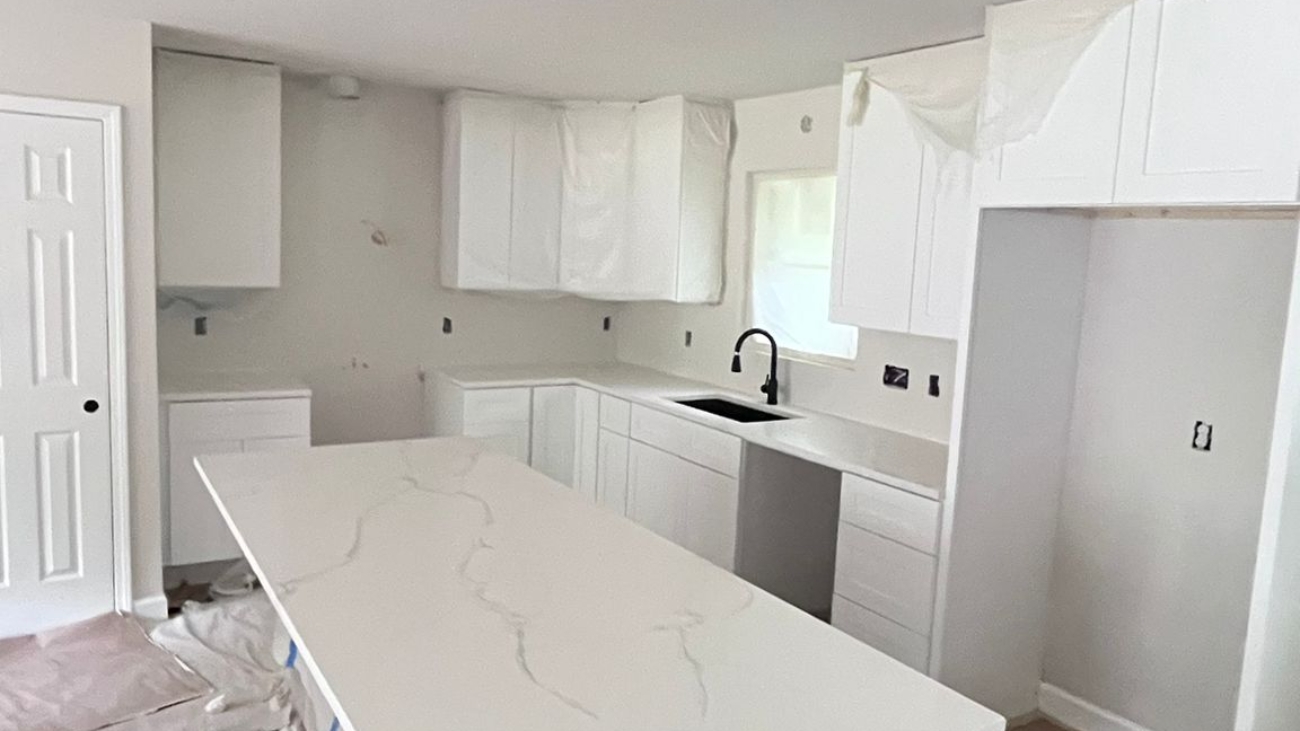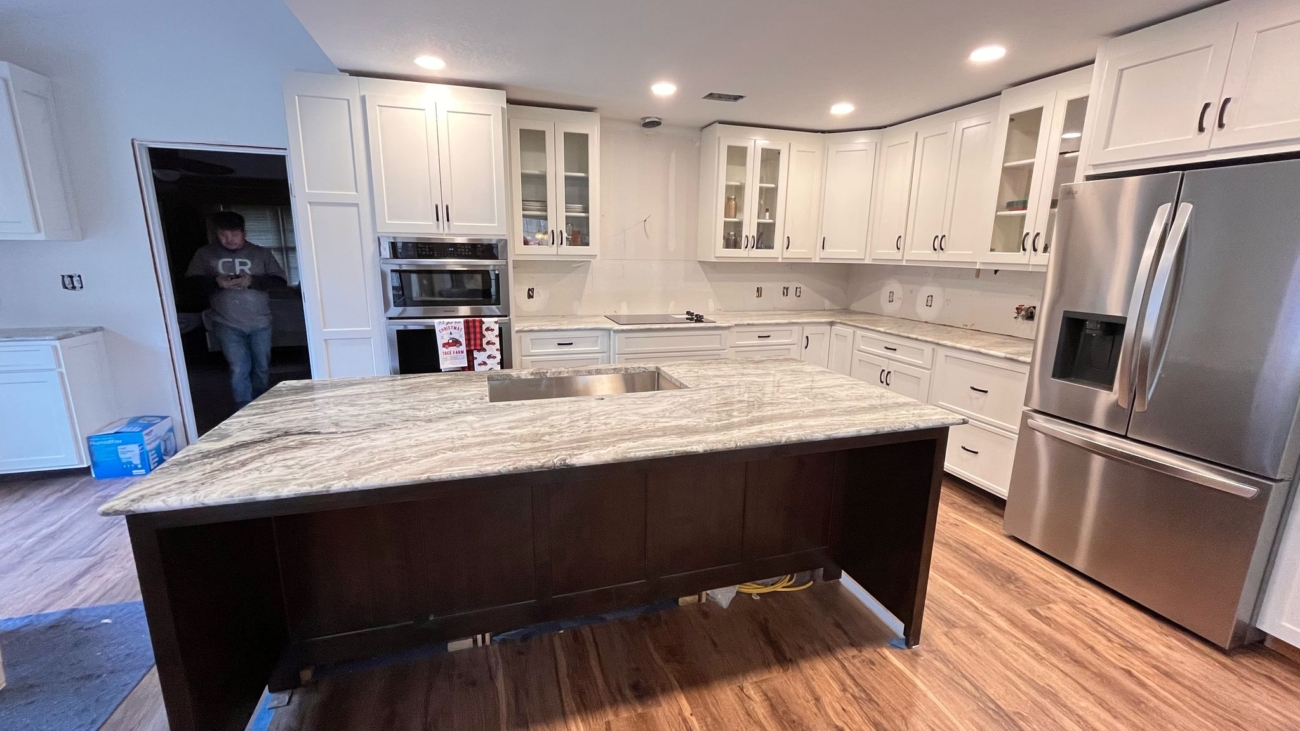Tiles are more than just a surface choice. They’re a key design element that can define the look and feel of any room. Remodeling your kitchen or bathroom is an exciting opportunity to refresh two of the most used and loved spaces in your home. Among the many decisions you’ll make, one of the most impactful is choosing the right tile. While it may seem like a simple design choice, the right tile enhances durability, improves functionality, and ties your entire aesthetic together.
When choosing tile, your first consideration should always be location and use. Kitchen floors, backsplashes, and bathroom walls or showers each require different types of materials and finishes. For example, a kitchen backsplash can use glossy ceramic or glass tile for a sleek, easy-to-clean surface, whereas bathroom floors demand slip-resistant porcelain or textured natural stone to ensure safety when wet. In kitchens, floor tiles must handle foot traffic and heavy appliances, while in bathrooms, they must withstand moisture, humidity, and frequent cleaning.
Material selection is next. Porcelain is a top choice for both kitchens and bathrooms due to its strength, low porosity, and wide range of styles, it can even mimic natural stone or wood. Ceramic is excellent for walls and backsplashes where durability isn’t as critical but style is. Natural stone like marble or travertine brings luxury and uniqueness to any space, but these options are porous and require sealing, especially in high-moisture areas like showers or behind kitchen sinks. If you love the stone look but want low maintenance, high-quality porcelain that mimics marble might be your best solution.
Beyond the material, size and shape matter more than you might think. In bathrooms, large tiles can help create the illusion of a bigger, cleaner space, while smaller mosaic tiles are ideal for curved shower floors or intricate detail work. In kitchens, long subway tiles or oversized rectangular tiles can add visual flow and make the room appear more spacious. Choosing the right tile size also affects installation time and cost, larger tiles require fewer grout lines, which means easier cleaning, but they also demand a more level subfloor.
Color and finish should align with the lighting and mood of the space. Kitchens often benefit from light, reflective tiles that brighten up the room, especially in areas with limited natural light. A glossy white backsplash paired with darker countertops can offer a crisp, modern look. Bathrooms, on the other hand, allow for more creativity with color, but remember that light-colored tiles will make a small bathroom feel larger. Matte finishes are excellent on bathroom floors for slip resistance, while glossy or satin finishes add shine to vertical surfaces like walls or shower niches.
Another important factor often overlooked is grout. In a kitchen or bathroom, grout needs to be mold-resistant, easy to clean, and properly sealed. You can match grout color to the tile for a clean, seamless look, or go bold with contrasting grout to highlight tile shapes and layouts. This is especially trendy in kitchens using classic white subway tiles with dark gray or black grout lines. No matter your choice, proper maintenance is key to keeping tiles and grout looking fresh and hygienic.
Think about your daily routine. In a busy family kitchen, you’ll want tile that can handle spills, splashes, and constant movement, durable and stain-resistant options like porcelain or glazed ceramic are ideal. For bathrooms used by children or guests, prioritize safety and easy cleaning with anti-slip tiles and fewer seams. In master bathrooms, homeowners often choose more elegant finishes and spa-like tones, such as marble-look porcelain, soft neutrals, or textured tile accents.
Budget also plays a key role. While high-end tiles like marble or handmade zellige tiles offer incredible visual appeal, there are plenty of mid-range ceramic and porcelain options that mimic high-end looks at a fraction of the price. Be sure to factor in not just the cost per square foot of the tile itself, but also installation labor, prep materials, spacers, grout, and sealing if needed. A trusted remodeling professional can help you balance quality, cost, and design impact.
Finally, don’t underestimate the value of seeing tiles in person. Light, space, and surrounding materials all affect how tile looks in your kitchen or bathroom. We always recommend taking home a few samples and viewing them during different times of day. This small step can prevent costly regrets later.


 Cart is empty
Cart is empty 

